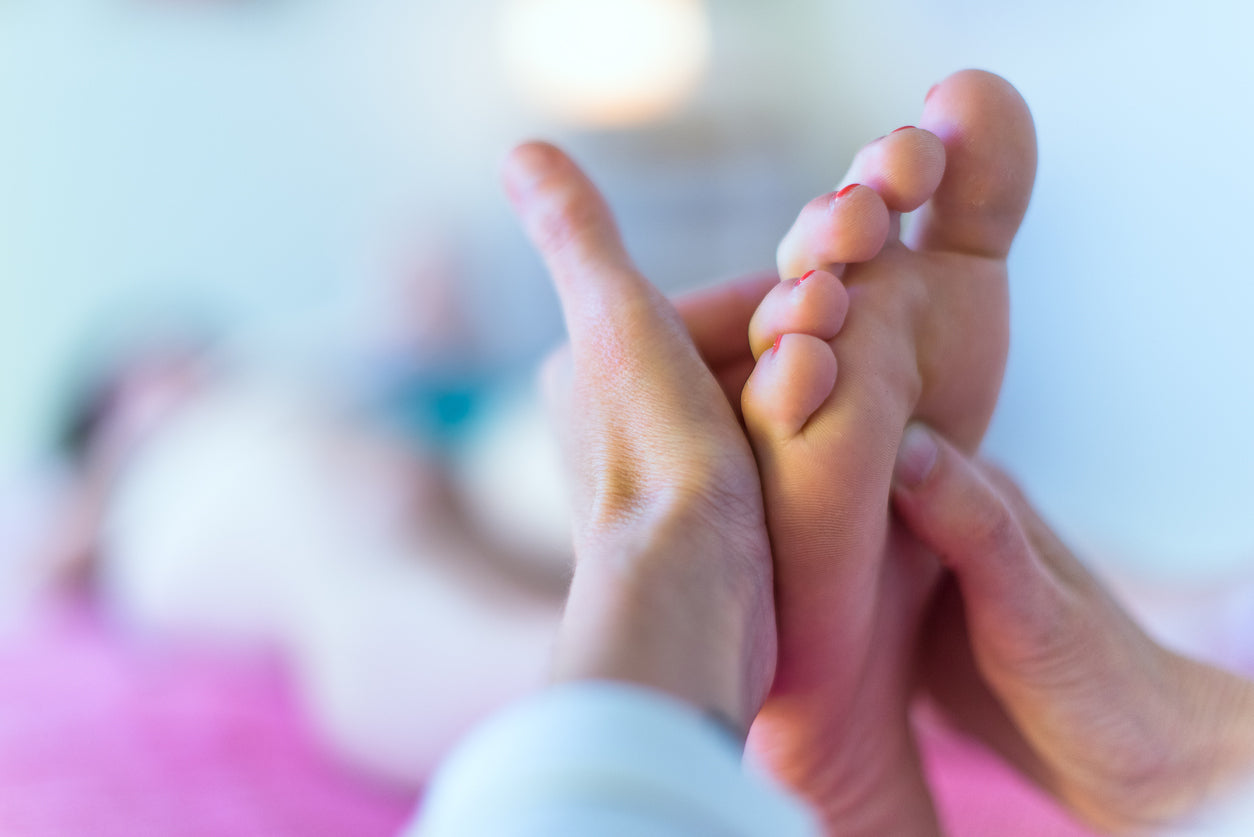When you get a migraine, it disrupts your routine. In fact, you’ve probably been sidelined by a migraine on a critical day where it was the last thing you needed.
There is no cure for migraine. However, there are several different approaches to treating the condition or relieving symptoms.
Your go-to action plan may already include tools like Axon Optics migraine glasses or abortive medications. Since reflexology for migraines is another option you might have heard about, today we’ll take a good look at what the science has to say about it.
What is Reflexology, Anyway?
Whether you’re using reflexology for migraines or any other condition, it’s considered a holistic therapy. Dating back to ancient China, it has similar origins to acupressure.
Reflexology involves using the thumb and fingers to put pressure on certain points on the hands, feet, or ears. These points are known as reflex points, and they’re believed to be connected to certain glands and organs.
Proponents and practitioners of reflexology believe that applying pressure to reflex points can be used to reduce tension. It’s thought that manipulating the peripheral nerves at reflex points can improve circulation, and ease the symptoms of different health conditions by communicating with the central nervous system.
By performing reflexology, practitioners say they can tap into the body’s Qi (chee) or life force that flows through the body from head to toe. According to reflexologists, massaging certain reflex points can remove blockages from the Qi and support the proper flow and balance of energy.

The Theory Behind Reflexology for Migraines
The idea behind reflexology for migraines also has to do with the body’s Qi.
When you get a migraine or other headache, some might say your body’s Qi isn’t flowing properly through your head. Too much Qi concentrated in the head is said to lead to throbbing, pounding, or stabbing sensations.
When Qi in the head is too low, believers in reflexology for migraine might say you’ll have a milder, more generalized headache.
Now that you know what reflexology is and how it may relate to your migraines, let’s look at what research has discovered.
Research Into Reflexology for Migraine Pain
Back in 2009, a large-scale analysis of reflexology studies was published. The analysis looked at 168 studies containing data on the practice of reflexology, its duration, and frequency. These studies concluded that reflexology could have several benefits, including:
- Increased blood flow to intestines and kidneys, including particular benefits for patients on dialysis
- Reduction in pain for people with AIDS, kidney stones, osteoarthritis, diabetes, and chest pain
However, most of the studies included in the review were found to be of poor quality, with small sample sizes.
Another systematic review published in 2011 evaluated 23 randomized, controlled trials. The goal was to determine reflexology’s effectiveness at relieving various health conditions. The review found:
- 8 studies suggested some benefits of reflexology on health conditions
- 14 studies demonstrated no effectiveness
- 1 study provided ambiguous or indeterminate results
And again, those who published the 2011 review pointed out the low quality of research in the studies, and urged future researchers to adhere to CONSORT standards (Consolidated Standards of Reporting Trials).

Specific Studies on Reflexology for Migraines
The 2009 analysis of reflexology studies determined that even the strongest evidence at the time wasn’t enough to prove the effectiveness of reflexology. There simply wasn’t enough validation of reflexology as an effective therapy for migraine, or any other medical condition.
In 2018, a placebo-controlled study was done to assess how reflexology might affect migraine-type headaches brought on by nitrate therapy (which is a common treatment for angina).
In this trial, researchers looked at 75 patients in coronary care units. Patients who received two 2-minute reflexology massages appeared to experience significant reduction in headache intensity.
While those results may be encouraging, it’s important to remember that the headaches studied were induced by nitroglycerine as part of nitrate therapy. So they’re not quite the same as the migraine that hits you in the middle of your lunch hour.
Using Reflexology
Researchers in the United States have examined reflexology for its potential in easing anxiety, depression, and pain. Generally speaking, however, this research hasn’t been very high quality, and has brought mixed results.
While clinical evidence for reflexology as a treatment for any condition (including migraine relief) are pretty thin, that doesn’t mean there are no benefits. And since it’s non-invasive, you probably aren’t taking a big risk by giving it a try to see how it affects you.
As a form of massage, reflexology could ease tension or pressure, helping you reduce stress and relax. Anything that eases tension certainly won’t work against you if you get migraines.
If you decide to give reflexology a go, it’s best to speak to your doctor first, and then go to a certified reflexologist. Consulting your doctor is especially important if you’re pregnant, because certain reflexology points have been associated with premature labor. You’ll also want to be extra careful with reflexology if you’ve had any hand or foot problems in the past.
Reflexology and other alternative practices are not meant to replace science-backed tools and migraine treatments. However, if your doctor gives you the green light, they could be used along with other relief products as supplemental tools.






